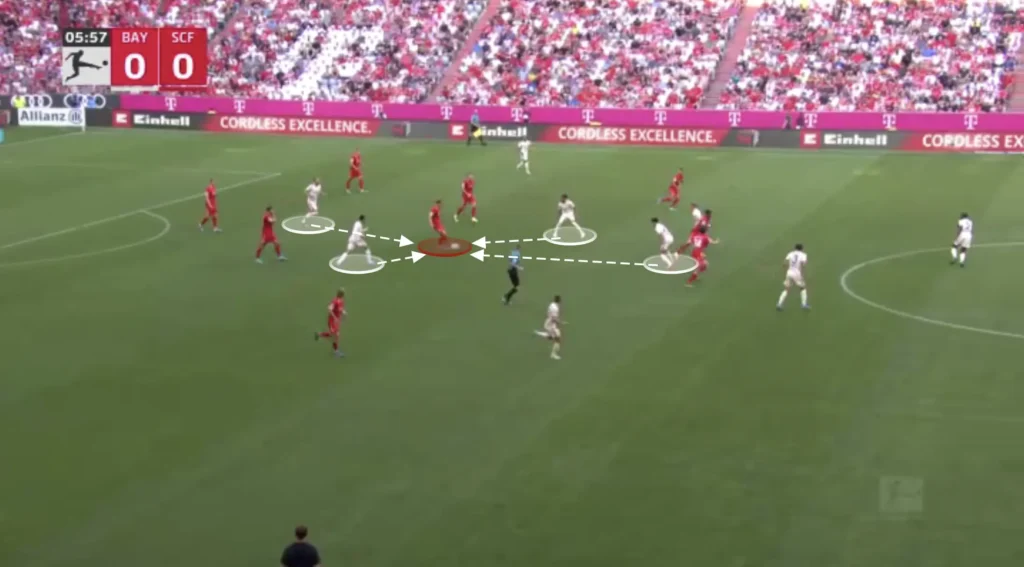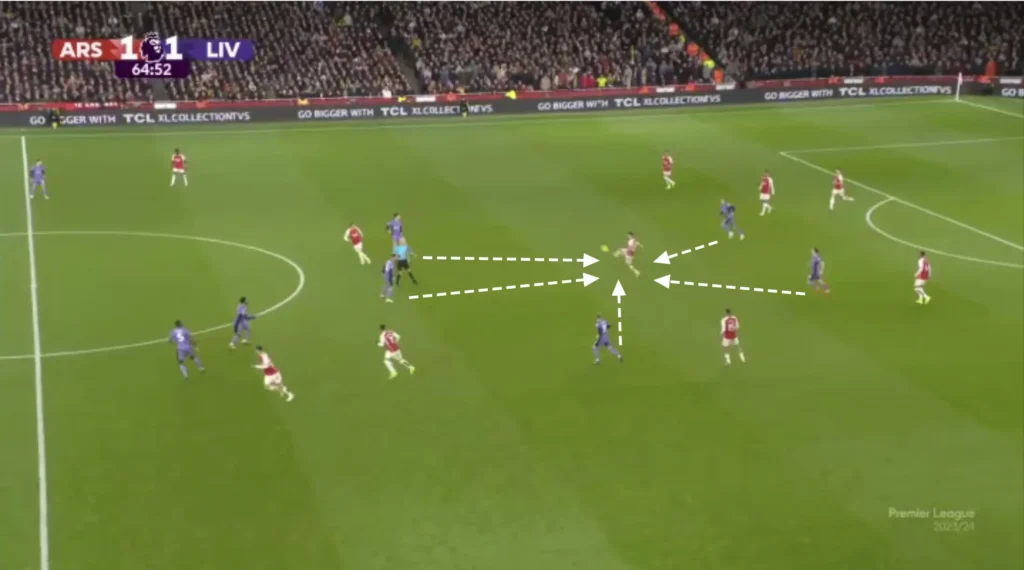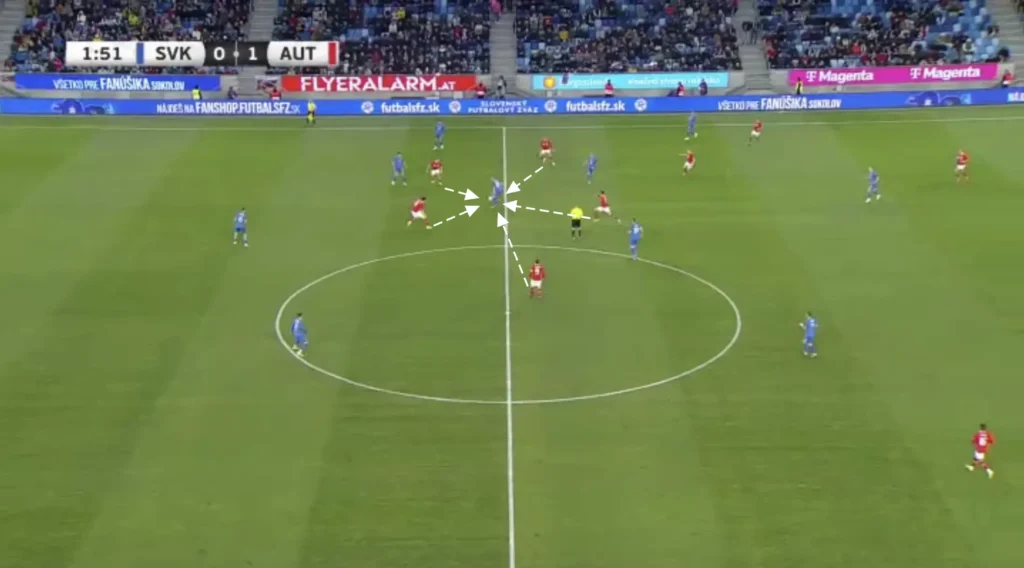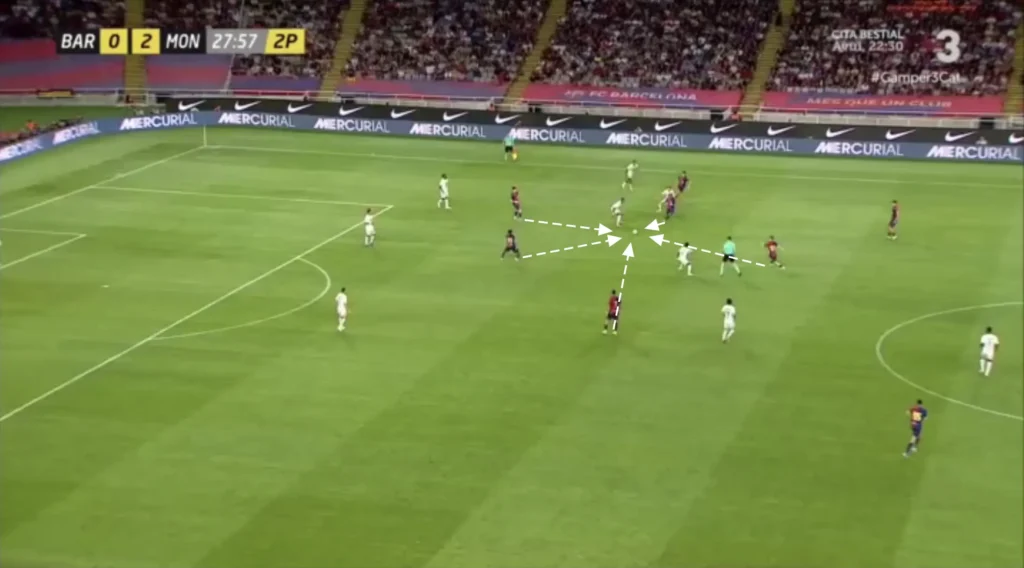In modern football, tactical innovations often define the way the game is played and perceived. One of the most influential tactical trends in recent years is Gegenpressing, a German term that translates to “counter-pressing.” This high-intensity strategy has revolutionized how teams approach defending and attacking, creating a seamless bridge between the two phases of play. In this article, we delve deep into the concept of Gegenpressing, its principles, advantages, challenges, and how coaches can implement it effectively.
What Is Gegenpressing?
Gegenpressing is a tactical approach where a team, immediately after losing possession, seeks to win the ball back as quickly as possible, often in the opponent’s half. Instead of retreating into a defensive shape, players swarm around the ball carrier and nearby passing options, applying intense pressure to disrupt the opponent’s ability to transition into attack.

The philosophy behind Gegenpressing is simple: the moment a team loses possession is often when the opposition is least prepared to play out, as they are in a state of transition. By pressing aggressively, the team aims to force mistakes, regain possession, and capitalize on the disorganization of their opponents.
It is also important to distinguish Gegenpressing from High Pressing, as the two are often conflated. High Pressing is a proactive strategy where a team positions itself high up the pitch to pressure the opponent’s build-up from the back. In contrast, Gegenpressing is a reactive strategy triggered specifically when possession is lost. While both aim to regain possession in advanced areas, Gegenpressing capitalizes on the opponent’s disorganization during their transition phase, whereas High Pressing focuses on disrupting structured build-up play.
The Core Principles of Gegenpressing
IImmediate Pressure: The moment a team loses possession, the players nearest to the ball must react instantly. These players aggressively close down the ball carrier to limit their time and space. This swift reaction prevents the opponent from settling into their transition and forces hurried decisions that often lead to errors.
Compactness: Gegenpressing thrives on maintaining a tightly-knit formation. The team ensures the spaces between players remain small, reducing the opponent’s ability to find passing options. This compact structure disrupts passing lanes and creates a swarm effect, overwhelming the opposition and increasing the chances of regaining possession.
Hunting in Packs: Success in Gegenpressing comes from teamwork. It is not enough for a single player to press; multiple players must coordinate their movements to target the ball carrier and nearby options. This collective effort forces the opponent into a corner, limiting their choices and increasing the likelihood of winning the ball back.
Rest-Defence: Effective Gegenpressing requires players to balance aggression with structure, ensuring the team is not left vulnerable during transitions. Rest-defence refers to maintaining a well-organized defensive setup even while attacking. Players must position themselves intelligently, staying aware of their roles and responsibilities to cover spaces and anticipate potential losses of possession. By keeping the attacking shape compact, the team can aggressively press the opposition when possession is lost without leaving gaps that could be exploited.
Managers Who Popularized Gegenpressing
Jürgen Klopp: Klopp is perhaps the most famous advocate of Gegenpressing. His teams at Borussia Dortmund and Liverpool have used this tactic with remarkable success. Klopp often describes Gegenpressing as “the best playmaker,” emphasizing its ability to create goal-scoring opportunities directly from immediate ball recovery. His dynamic and high-energy style has become synonymous with the modern application of Gegenpressing, setting a benchmark for others to follow.

Ralf Rangnick: Known as the “Godfather of Gegenpressing,” Ralf Rangnick is widely credited with developing and refining the concept during his managerial career in Germany. Rangnick’s deep understanding of the tactical, physical, and psychological elements of pressing influenced a generation of coaches, including Klopp. His legacy lies in shaping not just teams, but an entire philosophy that has permeated German football and beyond.

Hansi Flick: Hansi Flick has masterfully integrated elements of Gegenpressing into his tactical philosophy, using it as a versatile tool rather than a rigid system. During his short time at FC Barcelona, Flick has demonstrated how this tactic could be adapted to various formations and game situations. This flexibility allows his teams to dominate opponents by applying intelligent and well-timed pressure while maintaining control of the game.

Benefits of Gegenpressing
Regaining Possession Quickly: One of the most significant advantages of Gegenpressing is its ability to recover the ball almost immediately after losing it. By initiating an intense press at the moment of possession loss, teams can prevent the opponent from establishing their play. This not only allows the pressing team to regain control but also sustains their attacking momentum by keeping the ball in dangerous areas.
Disrupting Opponents’ Rhythm: Gegenpressing disrupts the opposition’s plans, throwing off their rhythm and forcing errors. When executed effectively, the tactic prevents the opponent from settling into their transitions or structured build-up play. This constant disruption creates frustration and hinders their ability to execute their game plan.
Creating Scoring Opportunities: Winning the ball high up the pitch often places the pressing team in an advantageous position to capitalize immediately. With the opposition disorganized and out of shape, the chances of creating and converting goal-scoring opportunities increase significantly. This aspect of Gegenpressing transforms defensive actions into immediate attacking threats.
Psychological Edge: The relentless nature of Gegenpressing has a cumulative psychological effect on opponents. Constantly facing high pressure can mentally and physically exhaust players, leading to mistakes and lapses in concentration. Over the course of a game, this can tilt the balance in favor of the pressing team, both tactically and mentally.
Challenges of Gegenpressing
Despite its effectiveness, Gegenpressing is not without its challenges, and understanding these is crucial for successful implementation:
Physical Demands: Gegenpressing requires exceptional fitness and stamina from players. The intensity and frequency of pressing actions demand high energy levels, and maintaining this over 90 minutes can be tough. Teams must ensure their players are well-conditioned and capable of sustaining the physical workload.
Risk of Exposure: While the tactic aims to disrupt the opposition’s transition, it carries inherent risks. When opponents bypass the press, they can exploit the compact structure of the pressing team to launch quick counter-attacks. This risk becomes even greater when the defensive line pushes high, creating large spaces for the opposition to take advantage of.
Tactical Discipline: Successful Gegenpressing hinges on precise coordination and collective understanding among players. Every individual must be aware of their role within the system and execute it flawlessly. Even minor lapses in positioning or timing can lead to breakdowns in the press, providing the opposition with opportunities to exploit gaps.
How to Implement Gegenpressing
For coaches looking to adopt Gegenpressing, consider the following steps:
- Conditioning and Fitness: Ensure players are physically prepared for the high demands of constant pressing.
- Drills for Coordination: Use training exercises that focus on pressing as a unit and maintaining compactness.
- Defined Triggers: Clearly define the moments when players should initiate the press.
- Game Scenarios: Practice Gegenpressing in match-like situations to develop players’ decision-making and positional awareness.
- Communication: Effective Gegenpressing requires constant communication among players to coordinate movements and cover spaces.
- Video Analysis: Use video footage to analyze both successful and unsuccessful pressing scenarios, helping players learn and refine their actions.
Gegenpressing in Modern Football
In today’s game, Gegenpressing is no longer confined to elite European clubs. Its principles have trickled down to youth academies and amateur levels, becoming a staple of football education worldwide. National teams have also embraced Gegenpressing, with many employing it during international tournaments to exploit the limited preparation time of their opponents.
The tactic has also influenced other aspects of football, such as recruitment and squad building. Clubs now prioritize players with high work rates, tactical intelligence, and the physical attributes needed to execute intense pressing systems.
Conclusion
Gegenpressing is more than just a tactic; it’s a philosophy that embodies the modern game’s emphasis on intensity, teamwork, and transitional play. While its execution requires exceptional fitness, discipline, and coordination, the rewards can be transformative. With its influence spreading across leagues, levels, and nations, Gegenpressing is a testament to the endless tactical possibilities within football.
